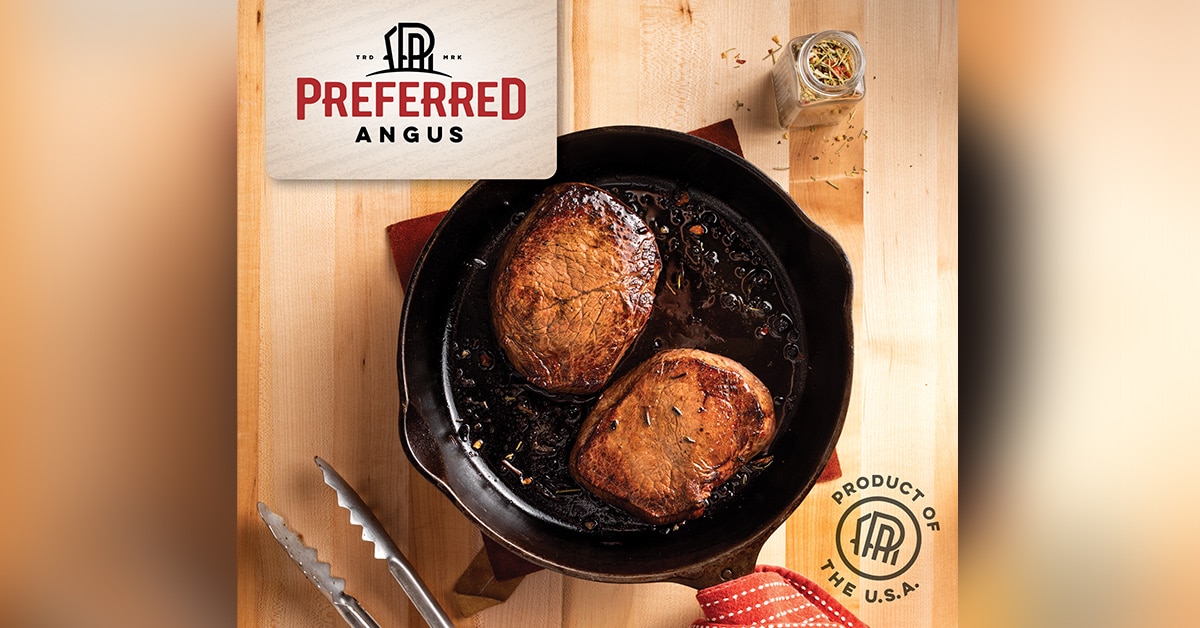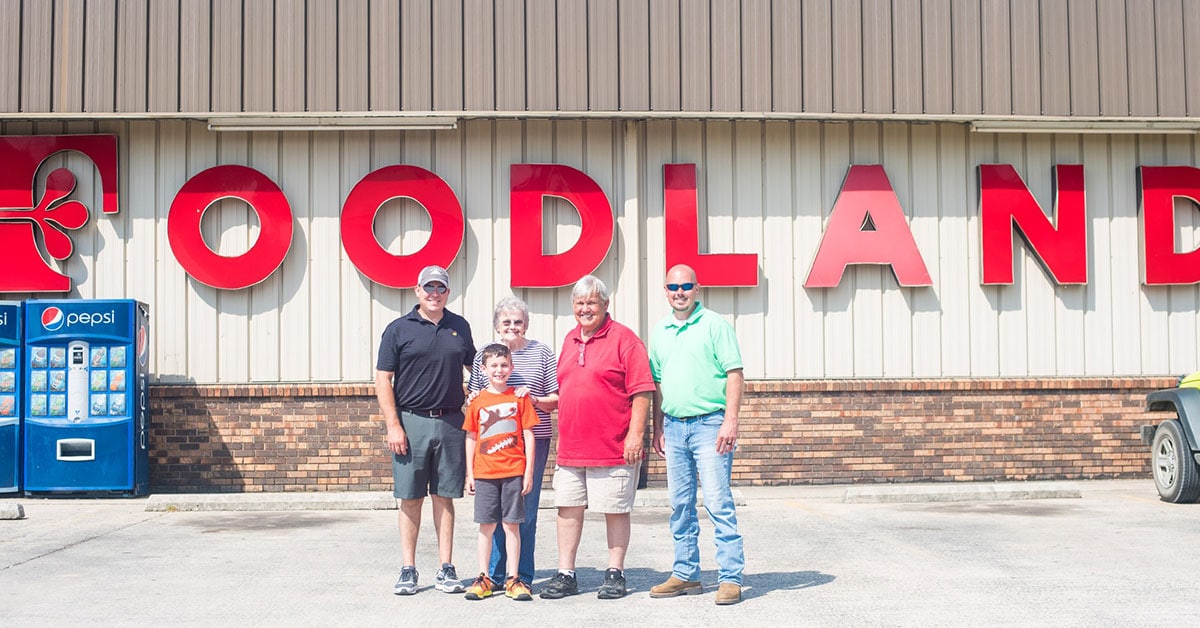You might have heard the phrase “shop local” thrown around when referring to local businesses,…
Beef Cooking Methods

Check out the cooking methods below to bring your Preferred Angus® beef to its full potential.
GRILLING, BROILING AND PAN SAUTEING
Grilling and broiling are generally used to quickly cook tender, smaller pieces of meat. Grilling cooks food from a heat source located below and broiling cooks foods from a heat source located above.
To grill, broil or pan saute:
- Season or marinate meat to taste.
- Preheat grill/broiler to medium high heat. When using a pan saute method, preheat pan on a medium heat flame with a small amount of oil.
- Place the meat onto the grill/broiler/pan.
- Always place the presentation side down first. This is the side you will put your diamond marks on when grilling.
- Cook the steak halfway on the first side, then turn over and cook the rest of the way on the second side until the meat reaches your desired internal temperature: Rare: 125°F (52° C). Medium Rare: 135°F (57°C). Medium 145°F (63°C). Medium Well: 150°F (66°C). Well: 160°F (71° C).
- Remove the meat from the grill and let rest for 5 minutes before cutting.
- For a pan saute method, prior to removing from the flame, add a small amount of butter and baste the steak with the melted butter. For more flavor, add fresh chopped garlic and fresh herbs then baste with butter garlic and herb mixture.
BRAISING
This technique is commonly used for larger cuts of well-exercised beef. Braising is a combination of dry-heat cooking and moist-heat cooking. The meat is first seared in a hot pan to develop color and flavor and then it is cooked slowly in a stock or other liquid in a covered pot. The moist heat breaks down the connective tissue while also enhancing and concentrating the flavor. The cooking liquid will usually become the finishing sauce for the meat. An acidic component like tomato paste, red wine or vinegar is often added to help break down connective tissues and balance the rich flavors.
To braise:
- Prepare (trim, tie) the meat and season to taste with salt and black pepper.
- Heat the pan (Dutch oven, braiser, etc.), add fat (such as butter or a high smoke point oil) and sear the seasoned meat on all sides until golden brown.
- Add some mirepoix (onions, carrots, celery) to the pan and caramelize.
- Add tomato paste and cook until a sweet aroma is present.
- Add flour to the pan to make a roux, if desired.
- Add the cooking liquid to the pan. The liquid should come up 1/3rd to 1/2 way up the side of the meat. The more tender the cut, the less liquid you will need to use. Broth (low sodium) and wine are great cooking liquids. Use three parts broth to one part wine (red wines like Burgundy or Cabernet Sauvignon work well).
- Add any additional flavorings (spices, herbs, etc.).
- Over high heat, bring the liquid to a boil.
- Once the liquid starts to boil, cover the pot with a tight-fitting lid and place the pot into a 300ºF to 350°F oven. When the meat is fork tender, remove it from the pot and keep warm.
- Insert a roasting fork into the meat and lift to see if it is fork-tender. The roast should pull away naturally from the fork; if it doesn’t, keep braising. A 2 ½ to 3-hour time frame is usually enough for a 3-lb roast.
- Finish the sauce by skimming the fat, tasting for seasoning and thickening as necessary.
ROASTING/SLOW ROASTING
Roasted meat is cooked through contact with dry, heated air in a closed environment (oven). As the outer part of the meat becomes hot, the food’s natural juices turn to steam and penetrate the meat more deeply. Generally, you will use large cuts of tender meat (Rib, Loin, Top Round, Sirloin) for roasting and large cuts of tougher meat (Brisket, Chuck, Bottom Round) for slow roasting. The main difference between roasting and slow roasting is time and temperature. Roasting happens between 275ºF and 350ºF and slow roasting happens between 225ºF and 275ºF. Most roasts (1 ½ pounds up to 5 pounds) will take 1 to 3+ hours when roasted. Roasts of a similar weight will take 3 to 7+ hours to get tender when slow roasted.
To roast:
- Trim, tie, season, stuff or marinate the meat. Sear the meat on all sides over direct heat or in a very hot oven to achieve a golden brown color.
- Place the roast onto a rack on a roasting pan to keep the meat elevated, so the hot air can reach all sides.
- Roast the meat uncovered at 275ºF-350ºF, until it reaches your desired internal temperature. (Be sure to account for carryover cooking, which can be up to 15° on a large roast.)
- Remove the roast from the oven and let it rest covered with foil for 10 to 15 minutes in a warm place before carving. Skipping this step will result in a dry roast.
- You may use the pan drippings to make a sauce/gravy.
- Slice the meat across the grain and serve with the sauce/gravy.
To slow roast:
Follow the same directions above, but cook at a lower temperature (225ºF-275ºF). Put a small amount of liquid in a pan so the meat doesn’t dry out. Cook tougher cuts until they are tender (typically once the meat reaches an internal temperature of approximately 190°F). You should be able to easily insert a fork into the roast and pull the meat away.
Use an internal meat thermometer to measure your desired degree of doneness.
- Rare = 125°F (52°C)
- Medium rare = 135°F (57°C)
- Medium = 145°F (63°C)
- Medium well = 150°F (66°C)
- Well done = 160°F (71°C)
Stop by your nearest Foodland to pick up the perfect cut of Preferred Angus® beef and give these cooking methods a try!
